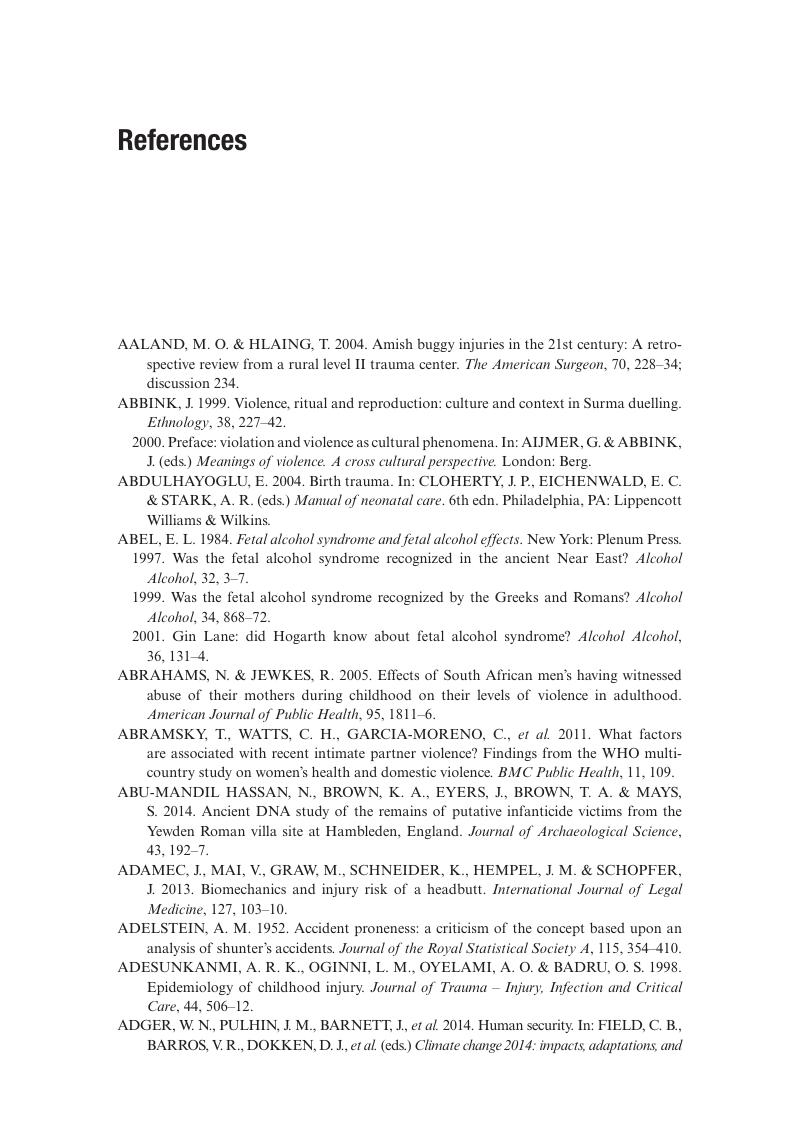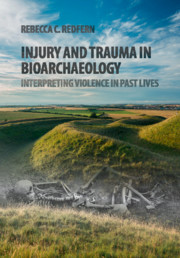Book contents
- Injury and Trauma in BioarchaeologyInterpreting Violence in Past Lives
- Injury and Trauma in Bioarchaeology
- Copyright page
- Dedication
- Contents
- Foreword
- Acknowledgements
- 1 Introduction
- 2 Approaches to Understanding and Interpreting Violence in the Past
- 3 Violent Behaviour in Humans and Human Societies
- 4 Environmental Factors and Violence
- 5 Injury in Life Course Perspective
- 6 Violent Happenings: Intentional Injury Patterns
- 7 Living with the Consequences of Injury
- 8 Conclusions
- References
- Index
- References
References
Published online by Cambridge University Press: 28 March 2017
- Injury and Trauma in BioarchaeologyInterpreting Violence in Past Lives
- Injury and Trauma in Bioarchaeology
- Copyright page
- Dedication
- Contents
- Foreword
- Acknowledgements
- 1 Introduction
- 2 Approaches to Understanding and Interpreting Violence in the Past
- 3 Violent Behaviour in Humans and Human Societies
- 4 Environmental Factors and Violence
- 5 Injury in Life Course Perspective
- 6 Violent Happenings: Intentional Injury Patterns
- 7 Living with the Consequences of Injury
- 8 Conclusions
- References
- Index
- References
Summary

- Type
- Chapter
- Information
- Injury and Trauma in BioarchaeologyInterpreting Violence in Past Lives, pp. 209 - 323Publisher: Cambridge University PressPrint publication year: 2016



